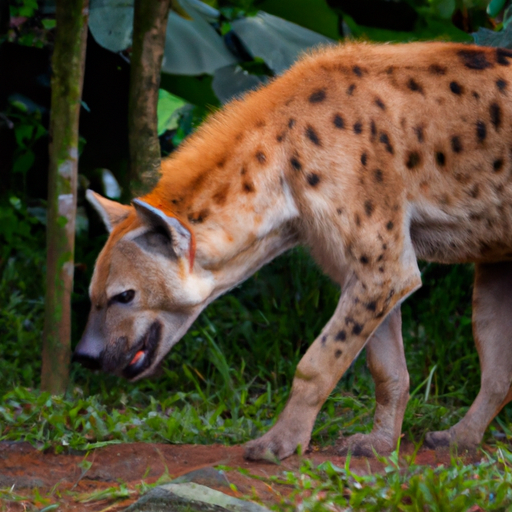 Introduction:
Introduction:
In the vast realm of the animal kingdom, there exists a diverse array of dietary preferences, ranging from herbivores to omnivores and carnivores. Carnivores, in particular, hold a unique position in the food chain, as their survival and ecological roles depend on consuming the flesh of other animals for sustenance. This article aims to delve into the world of carnivores, exploring their various adaptations, classifications, and examples across different taxonomic groups.
Defining Carnivores:
Carnivores, derived from the Latin words “caro” (flesh) and “vorare” (to devour), are organisms that predominantly feed on animal tissues to meet their nutritional requirements. They possess specialized anatomical, physiological, and behavioral adaptations for hunting, capturing, and consuming prey. While some carnivores exclusively consume meat, others may supplement their diet with plant matter.
Classification of Carnivores:
Carnivores are classified into different groups based on their taxonomic affiliation. The primary groups of carnivorous animals include mammals, birds, reptiles, amphibians, and even some invertebrates.
1. Carnivorous Mammals:
Mammals exhibit the greatest diversity of carnivorous adaptations. Some well-known examples of carnivorous mammals include:
a. Felidae (Cats): Lions, tigers, leopards, cheetahs, lynxes, and domestic cats are felids that possess sharp claws, powerful jaws, and keen senses, enabling them to stalk, chase, and capture prey efficiently.
b. Canidae (Dogs): Wolves, foxes, jackals, and domestic dogs are canids that employ a combination of social hunting, speed, and endurance to secure prey.
c. Ursidae (Bears): While bears are typically omnivorous, several species such as polar bears and brown bears are opportunistic carnivores, preying on fish, seals, and other mammals.
d. Mustelidae (Weasels): Weasels, stoats, otters, and badgers belong to this family, exhibiting elongated bodies, sharp teeth, and exceptional agility to capture prey.
e. Hyaenidae (Hyenas): Hyenas, known for their scavenging tendencies, are also proficient hunters, equipped with strong jaws, keen senses, and remarkable endurance.
f. Viverridae (Civets): Civets, including the African civet and palm civet, are small carnivores that consume a wide range of prey, including small mammals, birds, and reptiles.
2. Carnivorous Birds:
While most birds are omnivorous or herbivorous, some species have evolved to become carnivorous, primarily due to their ecological niche or habitat. Examples of carnivorous birds include:
a. Falconidae (Falcons): Falcons, renowned for their incredible speed and aerial hunting skills, primarily prey on small birds, rodents, and insects.
b. Accipitridae (Hawks and Eagles): Hawks and eagles possess sharp talons, powerful beaks, and exceptional eyesight, allowing them to capture and consume a wide range of prey, including mammals, reptiles, and fish.
c. Strigidae (Owls): Owls are nocturnal predators that rely on their silent flight, sharp talons, and remarkable hearing to locate and capture prey, which mainly consists of rodents, birds, and insects.
3. Carnivorous Reptiles:
Reptiles, though predominantly carnivorous, have a diverse range of feeding habits. Some carnivorous reptiles include:
a. Crocodylidae (Crocodiles): Crocodiles are apex predators, using their immense size, powerful jaws, and camouflaged bodies to ambush and capture a variety of prey, including fish, reptiles, birds, and mammals.
b. Serpentes (Snakes): Many snake species are carnivorous, with their diet consisting predominantly of rodents, birds, amphibians, and occasionally other snakes.
c. Varanidae (Monitor Lizards): Monitor lizards, such as the Komodo dragon, are formidable carnivores, capable of hunting and consuming large prey, including deer and pigs.
4. Carnivorous Amphibians:
While most amphibians are insectivorous, some species exhibit carnivorous tendencies:
a. Salamandridae (Newts): Many newts are carnivorous, feeding on a variety of invertebrates, small fish, and amphibian larvae.
b. Ranidae (Frogs): Certain species of frogs, such as the African bullfrog, are known to consume small vertebrates, including other frogs, lizards, and even birds.
5. Carnivorous Invertebrates:
Several invertebrates are carnivorous, employing a variety of feeding strategies:
a. Arachnida (Spiders): Spiders are renowned carnivores, using their venomous bites and silk webs to capture and immobilize prey, which primarily consists of insects and other arthropods.
b. Insecta (Insects): Certain insect species, such as praying mantises and dragonflies, are carnivorous, preying on smaller insects and even small vertebrates.
Conclusion:
The world of carnivorous animals is rich and diverse, with numerous adaptations and strategies for capturing and consuming prey. From the powerful felines and canids to the stealthy reptiles and invertebrates, carnivores play a crucial role in maintaining the balance of ecosystems. Understanding their unique characteristics and ecological roles allows us to appreciate the incredible diversity and complexity of nature’s food web.
